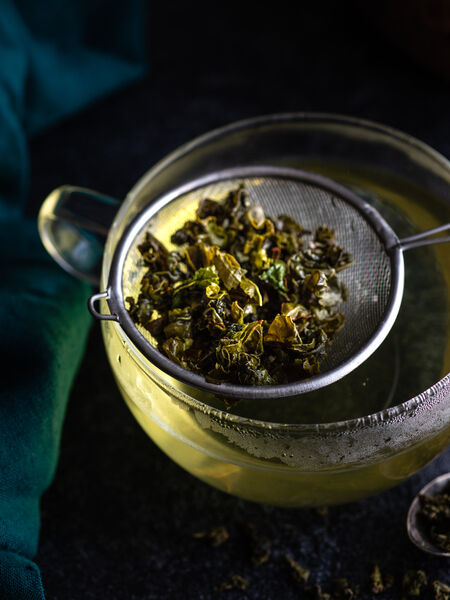Single-Origin Teas: Pure Flavor From the Source

Hello folks! Normally, as a trainer and nutrition coach, my articles in TeaMuse focus on health advice through tea, and I’m realizing that lately I’ve been focusing primarily on herbals. I do love my pretty petals and flowers, but it’s time to step back and retrace my roots as a tea sommelier— so for the 4th of July, I want to celebrate independence with single-origin true teas, our friends from the Camellia Sinensis plant.
How do single-origin teas represent independence? Because single-origin teas come from one region, one farm, and as a result possess all the characteristics unique to that source. They’re unlike any other blends you’ll find on the market, and the best ones have been curated by Adagio to come from independent families who have been bringing the tea world their magic for generations.
Let’s take a look at some of these amazing varieties!
Fang Ai Hua’s Lapsang Souchong
Lapsang Souchong is a natural marvel. First off, have you ever TASTED it? Just. Incredible. This tea fills your cup with a whole lot of earthy and smoky beauty, bringing to mind images of nature in all its wild, untouched glory.
Being reminded of nature makes me find it particularly comforting, especially as the world settles down post-pandemic. Last year, during the initial stages of quarantine and lockdown in New York City, I found so much solace in the nearby parks and outdoor spaces, where it was considered safer to walk around in sunlight and escape the cabin fever of being cramped in an apartment. (There are only so many Uncle Iroh-style pushups you can do in your bedroom before getting bored. And sore.)
Having this tea in your un-fevered cabin is a great option for keeping your sense of wildness and connection to the environment. And it’s super fantastic iced!
Wang Hong’s White Peony
White Peony is the polar opposite in smell, taste, even appearanceto Lapsang Souchong! But that’s what makes it wonderful.
Sometimes you need a little pick-me-up during the day, and white tea has always been that for me. It also has amazing antioxidant activity. Interestingly, this type of tea, since it’s less popular and harder to come by, hasn’t yet been studied as much as green or black tea for its potential health benefits. But that’s part of the fun— as someone whose livelihood relies on keeping up with the latest in health and nutrition research, I’m infinitely looking forward to seeing whatever research pops up in the future!
And yes, this one is great when iced as well. Can’t forget about that during the summer heat!
Xu Zheng Ren’s Jade Oolong
Speaking of summer heat, now— reading through Xu Zheng Ren’s words on his Jade Oolong tea, I’m reminded as well how tea can help with non-nutritional aspects of health, as well.
In this weather, and especially as the season is finally open for vacation and travel, it’s easier and easier to shirk off workouts and responsibilities in favor of blasting out into the sunlight that we missed so much over the last pandemic-ridden year. I’ll confess that my inner Capricorn is touched to read the words of someone who can give us that gentle nudge about the power of hard work, as I know it’ll make us stronger in the long haul.
(After, of course, that well-earned vacation!)
Wang Mei Rui’s Ti Kuan Yin
And how can I talk about oolong without mentioning Wang Mei Rui’s delightful Ti Kuan Yin?
If you’ve never had an oolong in your life, then please. Let it be this one.
Ti Kuan Yin is such a perfect summer tea because it has a little of everything that the other teas have touched on in their aesthetics and taste.
It’s as sweet as a day off from Zoom meetings. It’s as savory as a lush walk through the park. It’s as refreshing as a new pose during your yoga session. It’s… do I need to say more?
Better yet, try picking up a sample of all the teas mentioned in this article, and rotate them depending on your mood. The darker teas, like Lapsang Souchong, will do better with hot brews— gotta love air conditioning during the summer! — and the lighter teas like White Peony, Jade Oolong, and Tu Kuan Yin will really sparkle when you try them iced.
That’s why having a variable-temperature tea kettle like the UtiliTEA is essential for maximizing your sipping experience, so that you can control how hot the water gets before it sears into these excellent buds.
But hey! Don’t just take my advice— try out different temperatures, teas, and steeping methods while you celebrate your own independent taste buds!
Cheers!
Natasha Nesic
NASM Certified Personal Trainer and Nutrition Coach, Founder of
